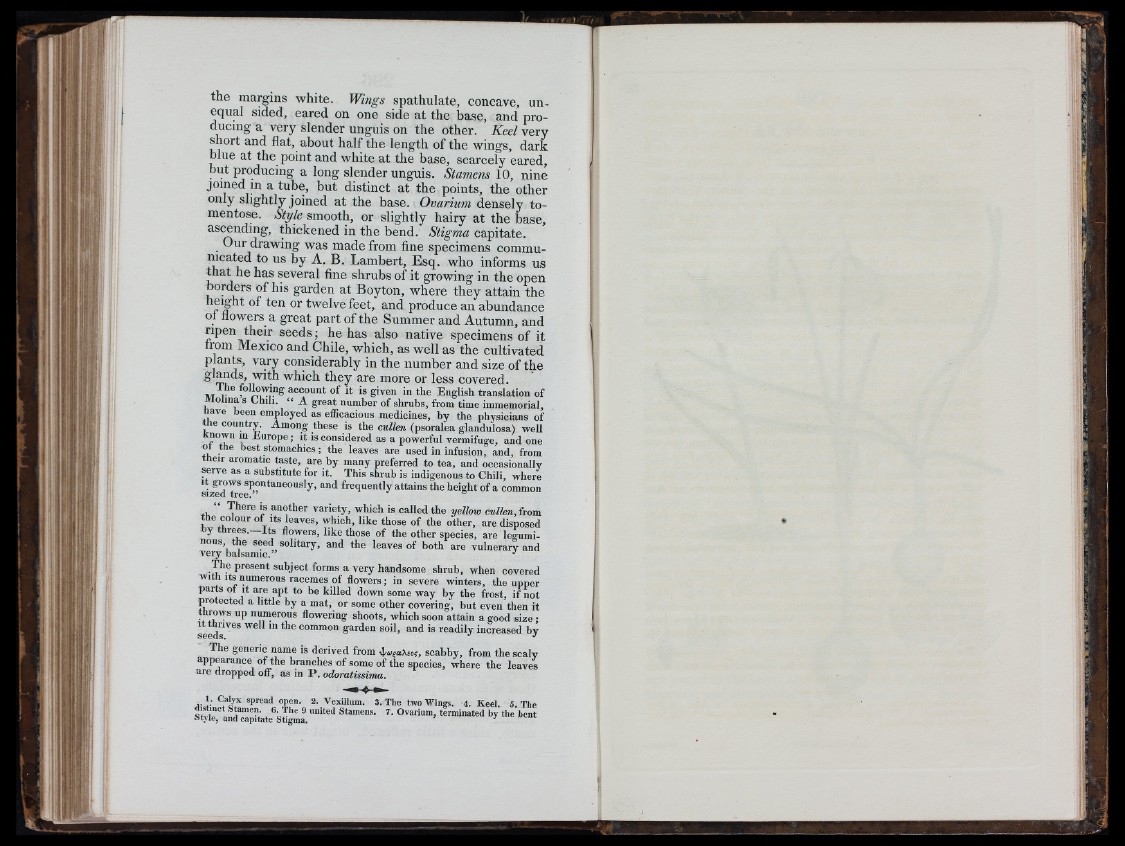
the margins white. Wings spathulate, concave, unequal
sided, eared on one side at the base, and producing
a very slender unguis on the other. Keel very
short and flat, about half the length of the wings, dark
blue at the point and white at the base, scarcely eared,
outproducing a long slender unguis. Stamens 10, nine
joined in a tube, but distinct at the points, the other
only slightly joined at the base. Ovarium densely tomentose.
Style smooth, or slightly hairy at the base,
asranding, thickened in the bend. Stigma capitate.
Our drawing was made from fine specimens communicated
to us by A. B. Lambert, Esq. who informs us
that he has several fine shrubs of it growing in the open
borders of his garden at Boyton, where they attain the
r "J twelve feet, and produce an abundance
ot flowers a great part of the Summer and Autumn, and
seeds; he has also native specimens of it
irom Mexico and Chile, which, as well as the cultivated
plants, va.ry considerably in the number and size of the
glands, with which they are more or less covered.
The following account of it is given in the English translation of
Molina s Chih. “ A great number of shrubs, from time immemorial,
nave been employed as efficacious medicines, by the physicians of
e country. Among these is the eullen (psoralea glandulosa) well
Known in Europe; it is considered as a powerful vermifuge, and one
ot the best stomachics; the leaves are used in infusion, and, from
their aromatic taste, are by many preferred to tea, and occasionally
serve as a substitute for it. This shrub is indigenous to Chili, where
siz^d°Tre?” "*“ ‘'° “ " '^ ’ frequently attains the height of a common
“ '^here is another variety, which is called the yelloiv cu llm.im m
the colour of its leaves, which, like those of the other, are disposed
y threes. Its flowers, like those of the other species, are leguminous
the seed solitary, and the leaves of both are vulnerary and
very balsamic. ^
The present subject forms a very handsome shrub, when covered
with Its numerous racemes of flowers; in severe winters, the upper
parts of It are apt to be killed down some way by the frost, if not
protected a little by a mat, or some other covering, but even then it
throws up numerous flowering shoots, which soon attain a good size •
s e e d s c o m m o n garden soil, and is readily increased by
The generic name is derived from scabby, from the scaly
appearance of the branches of some of the species, where the leaves
are dropped off, as in P . odoratissima.
1. Calyx spread open. 2. Vexillum. 3. The two Wings. 4. Keel. 5
distinct Stamen. 6. The 9 united Stamens. 7. Ovarium, terminated by the
iityle, and capitate Stigma. ^
The
bent